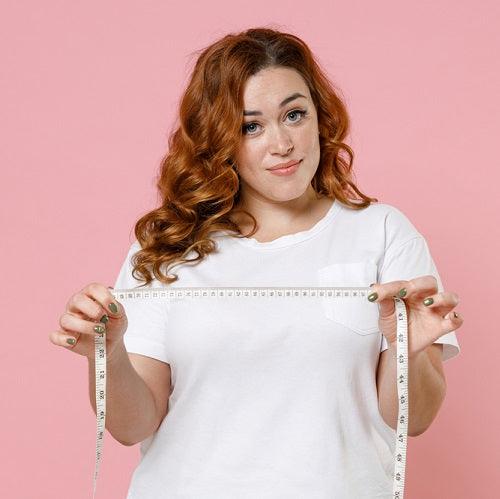Endometriosis vs PCOS: Understanding the Differences and Navigating Treatment Options
Endometriosis and Polycystic Ovary Syndrome (PCOS) are two very common, yet different chronic gynecological conditions. Though the conditions are separate, it’s possible for someone to have both. This blog post will discuss the differences, as well as similarities, between the two and educate on the symptoms, diagnostic criteria, causes, risk factors, and treatment options. Being informed is the first step to feeling empowered to discuss your concerns with your healthcare provider and decide on the best management plan that fits into your individual lifestyle.
Overview of Endometriosis and PCOS
Both of these conditions affect the reproductive system but are very distinct. When comparing PCOS vs endometriosis, understanding their unique characteristics is essential. Here is an overview of each condition:
Endometriosis
Endometriosis is an inflammatory process where tissue similar to the lining inside the uterus (the endometrium) grows outside of the uterus. This tissue can grow on the ovaries, fallopian tubes, outer surface of the uterus, and other organs within the pelvis such as bowel and bladder. It is estimated that 10% of women are affected by endometriosis. However, this condition is significantly under diagnosed and it often takes an average of 7 years to be properly diagnosed. Symptoms can occur as early as the first period (menarche) and in rare cases, extend beyond menopause. However, women between the ages of 25 to 40 are most commonly affected.
PCOS
PCOS or polycystic ovarian syndrome is a hormonal disorder where the ovaries produce excess levels of androgens (male sex hormones). This causes other reproductive hormones to be imbalanced. Although some women with PCOS have small ovarian cysts (due to eggs not fully maturing), it’s actually not necessary to have polycystic ovaries to be diagnosed. PCOS is one of the most common hormonal disorders among women of reproductive age, affecting around 15% of this population. Women from adolescence through menopause are affected, though symptoms tend to first manifest at the onset of the period. One significant symptom of PCOS is weight gain, and the condition can make it difficult to lose weight, making this disorder prevalent among those who are overweight and/or obese.
Symptoms and Diagnosis
Symptoms associated with PCOS and endometriosis can sometimes overlap, but they do have unique differences.
Symptoms of Endometriosis include:
- Painful periods - this pain is often debilitating and can interfere with work, school, and social activities. The pain may be unrelieved by over the counter pain medications.
- Heavy periods - inflammation of the reproductive tract can result in heavier periods
- Chronic pelvic pain - pain exists outside of the menstrual period and is present for more than 6 months
- Pain during intercourse - women often report feeling pain deep inside the vagina or abdominal pain during intercourse
- Bowel symptoms with the period - this can include constipation, bloating, abdominal pain/cramping, and painful bowel movements
- Infertility - inflammation of the pelvic structures, scarred fallopian tubes, and adhesions can cause fertility issues and make implantation difficult
Diagnosis of Endometriosis
The only definitive way to diagnose endometriosis is through laparoscopic surgery. However, it is NOT necessary to undergo surgery simply to be diagnosed and treated. Finding a healthcare provider who listens to your endometriosis symptoms is critical for being properly diagnosed.
Symptoms of PCOS include:
- Irregular periods - cycle length (time between periods) and cycle duration (the amount of days a period lasts) will be abnormal. It is not uncommon for women with PCOS to regularly skip periods or have more frequent and prolonged (lasting longer than 7 days) bleeding.
- Heavy periods - an irregular menstrual cycle can cause the lining of the uterus to thicken, resulting in abnormally heavy bleeding
- High levels of androgens (male sex hormones) - this results in symptoms such as acne, hirsutism (hair growth on the face, chest, and/or back), and male pattern hair loss/thinning on the scalp
- Weight gain - PCOS increases the risk for insulin resistance, which causes weight gain and makes it difficult to lose weight
- Polycystic ovaries - some women with PCOS will have multiple follicles on the ovaries due to impaired egg maturation
- Infertility - PCOS impairs ovulation, making it more difficult to get pregnant
Diagnosis of PCOS
Similar to Endometriosis, finding a healthcare provider who listens to your symptoms may be all that is needed to diagnose PCOS. Having irregular periods and signs of elevated androgen hormones (acne, hirsutism, hair loss) meets the criteria for diagnosis. If symptoms are not clear, hormone labs can be ordered. An ultrasound is not necessary to diagnose PCOS since many women with the disorder do not have polycystic ovaries.
Causes and Risk Factors
The exact cause of both Endometriosis and PCOS are unclear and research is ongoing. However, there are some possible causes and risk factors that have been identified.
Endometriosis Possible Causes and Risk Factors
- Retrograde menstruation - this is when period blood flows upward through the fallopian tubes and into the pelvis instead of the vagina. Since this blood contains endometrial cells, they can stick to the pelvic walls and surfaces of pelvic organs. Overtime, this tissue grows and thickens.
- Immune system disorder - disorders of the immune system can make it difficult for the body to recognize and destroy endometriosis tissue
- Surgical scars - endometrial cells can attach to scar tissue following a pelvic or abdominal surgery
- Genetic predisposition - the risk for endometriosis increases when one or more relatives have the condition
- Early menarche or late menopause - starting menstrual periods before the age of 11 or going into menopause after the age of 55 can increase the risk
- Period characteristics - having shorter cycle lengths (less than 27 days) and heavy periods that last longer than 7 days can increase the risk
- No prior childbirths - pregnancy gives a break in the menstrual cycle, leading to less overall estrogen exposure over the reproductive years
- Excess estrogen in the body - this can cause more endometrial tissue to grow
- Uterine abnormalities - often causes abnormalities in menstruation, increasing the risk for retrograde reflux
PCOS Possible Causes and Risk Factors
- Hormonal imbalance - higher levels of male sex hormones (androgens) impair ovulation, resulting in irregular periods. They also cause acne and excess hair growth on the face, chest, and/or back
- Insulin resistance - high insulin levels cause the ovary to produce more male sex hormones (androgens). Being insulin resistant means that the body isn’t processing insulin correctly, causing high glucose levels in the blood.
- Low-grade inflammation - chronic inflammation can cause the ovaries to produce more male sex hormones (androgens)
- Genetic predisposition - the risk for PCOS increases when one or more relatives have the condition
- Lifestyle - a diet low in vital nutrients and a sedentary lifestyle can increase the risk for PCOS
Treatment and Management
It’s important to work with your healthcare provider to develop personalized treatment plans. These conditions can affect everyone differently, so it is often not a one size fits all approach. Understanding the differences between Endo vs PCOS is crucial for tailoring the right treatment plan. It’s also critical that the treatment plan fits into your individual lifestyle for sustainability. Here are some treatment options for each condition:
Endometriosis Treatment and Management includes:
- Lifestyle modifications - following an anti-inflammatory diet that focuses on fresh fruits and vegetables, whole grains, lean protein, and olive oil, as well as regular exercise and stress management, can decrease pain associated with endometriosis.
- Pain management - this includes both pharmacological and non-pharmacological options
- Pharmacological - nonsteroidal anti-inflammatory drugs (NSAIDs), such as ibuprofen, can help manage pain. It’s more effective to start medication prior to the period beginning in order to block prostaglandins (which cause the muscles and blood vessels of the uterus to contract) from rising
- Non-pharmacological - warm compress, transcutaneous electrical nerve stimulation (TENS) unit, deep breathing exercises, pelvic floor therapy, and rest can help cope with severe pelvic pain.
- Hormonal therapies - contraceptive hormones can stop fluctuations during the menstrual cycle which cause endometriosis tissue to thicken, break down, and bleed. They may also slow the growth of endometriosis tissue and prevent new tissue from forming. It’s important to know that symptoms often return when hormones are discontinued. This is not a recommended option for those actively trying to conceive.
- Surgical options - surgery to remove endometriosis tissue can be helpful for improving fertility if other options have been unsuccessful. Unfortunately, endometriosis tissue can often return after surgery.
- Trauma-informed therapy - past trauma can exacerbate endometriosis pain. Working with a trauma-informed therapist can help develop effective coping strategies
PCOS Treatment and Management includes:
- Lifestyle modifications - a well balanced diet prioritizing whole foods, regular exercise, stress management, and adequate sleep can help balance hormones and reduce the severity of PCOS symptoms
- Optimizing nutrients - vitamin D and iron deficiency can impair ovulation. Short term supplementation to optimize these vital nutrients can help with regulating cycles
- Supplements - research is ongoing, but oral womens supplements with inositol and/or berberine have been reported to help regulate cycles, decrease androgen hormones, and improve insulin sensitivity. It’s important to consult with your healthcare provider before starting any supplements as they can interact with other medications. They are also not FDA approved
- Medications - there are a variety of pharmacological options that target different concerns:
- Contraceptive hormones - PCOS increases the risk for endometrial hyperplasia (a condition where the lining of the uterus becomes abnormally thick). This occurs when ovulation and regular shedding of the uterine lining does not occur. The progestin in contraceptive hormones keeps the lining thin and healthy. Additionally, contraceptive hormones that contain estradiol as well can decrease acne, hirsutism, and hair loss by lowering the amount of free testosterone in the body.
- Spironolactone - this is an androgen blocker that lowers the production of male sex hormones, resulting in less acne, hirsutism, and male pattern hair loss
- Metformin - for those with insulin resistance, metformin can help the body process insulin more effectively. This can aid in PCOS weight loss, as well as regulating cycles and decrease androgen hormones
- Thyroid medication - PCOS can affect thyroid function, so optimizing the thyroid may help with weight loss and cycle regulation
Many women are confused on whether they have PCOS vs endometriosis, or both. Understanding the differences between these two conditions is the first step to effectively managing them. It is always okay to get a second opinion if you feel that your concerns are not being addressed. The goal is to find a healthcare provider who can work with you to develop a management plan that caters to your individual needs.


